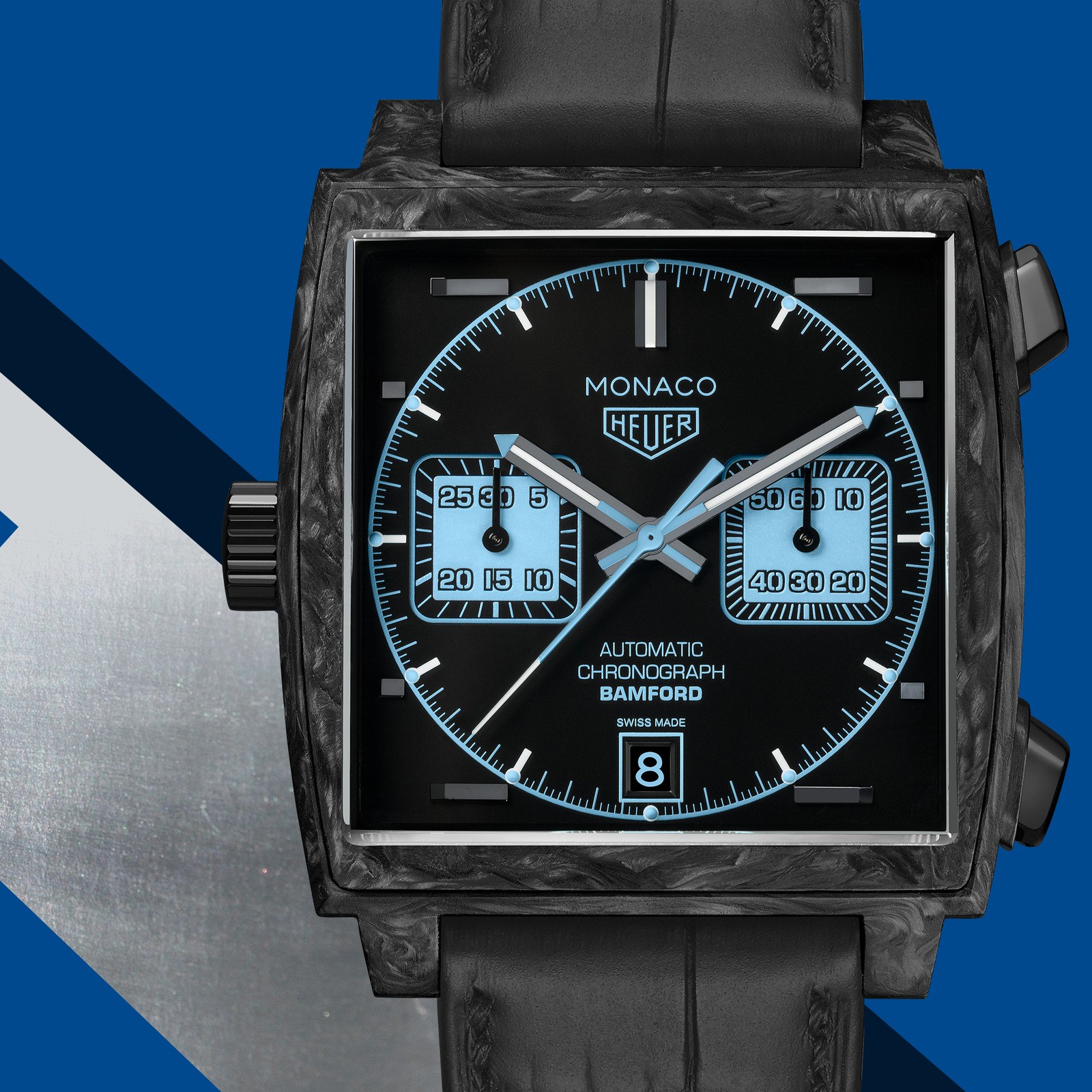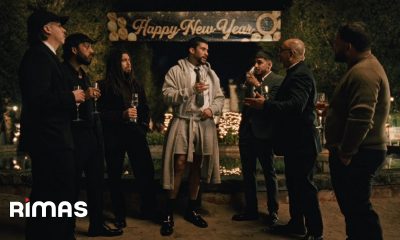
The Tag Heuer Monaco Was More Than a Steve McQueen Favorite. What Makes It So Special?
Inside Heuer’s headquarters, watchmakers were hard at work on a revolutionary movement referred to only as “Project 99.” In the late ‘60s, Heuer partnered with watch brands Buren and Breitling as well as movement manufacturer Dubois Depraz to create the world’s first automatic chronograph watch (meaning a timepiece with a stopwatch that didn’t require winding). The two factors were at odds: watchmakers up to that point had found it impossible to fit both an automatic movement and a chronograph into a wearable case—but manual (non-automatic) watches had fallen out of favor during the ‘60s. Heuer and its partners broke through in 1969 but there was a problem: two other companies also solved the puzzle.
A Monaco made in collaboration with Bamford Watch Department
So Heuer, along with Seiko and Zenith, spent 1969 releasing competing versions of this new invention. Zenith made the earliest announcement, coming in a couple months before Heuer. Seiko released a version only in Japan. Heuer was neither quiet nor limited. It rolled out the watch, and the movement it dubbed the Caliber 11, with a press conference featuring watch dignitaries and then released it around the world.
Innovation is great, but the watch’s appearance on McQueen’s wrist cemented the Monaco’s icon status. The Monaco has gone in and out of production as ownership of Heuer has changed hands (it was acquired by TAG in 1985 and is currently owned by LVMH, the same company Louis Vuitton and Dior belong to). But in recent years, Tag Heuer has freshened up the Monaco with new colorways and a collaboration with Bamford Watch Department. But the most compelling models, like the Gulf Oil-edition inspired by the other patch on McQueen’s Le Mans jumpsuit, harken back to the movie that made the style famous.
The Monaco in a blue-and-orange Gullf Oil colorway
Today, Monacos with McQueen’s blue-and-white dials are the most sought-after. Jonathan Scatchard, who founded a vintage shop specializing in vintage Heuers named—what else?—Vintage Heuer, says versions of the McQueen edition (known as reference 1133b) typically sell for between $18,725 and $25,000. Monacos with a grey dial (and just a single letter difference in its reference number 1133g, meanwhile—made “at the exact same time,” Scatchard emphasizes—“only” sell for $7,500. Of course, McQueen isn’t the only guy capable of shifting a watch’s market. Prices for the Rolex Daytona, a driver’s watch with a colorway worn by Paul Newman that collectors go crazy for, rise and fall following the same pattern. More proof that while technical advances are well and good, it’s the story that brings a watch like the Monaco to icon status.
Article written by Cam Wolf #GQ












